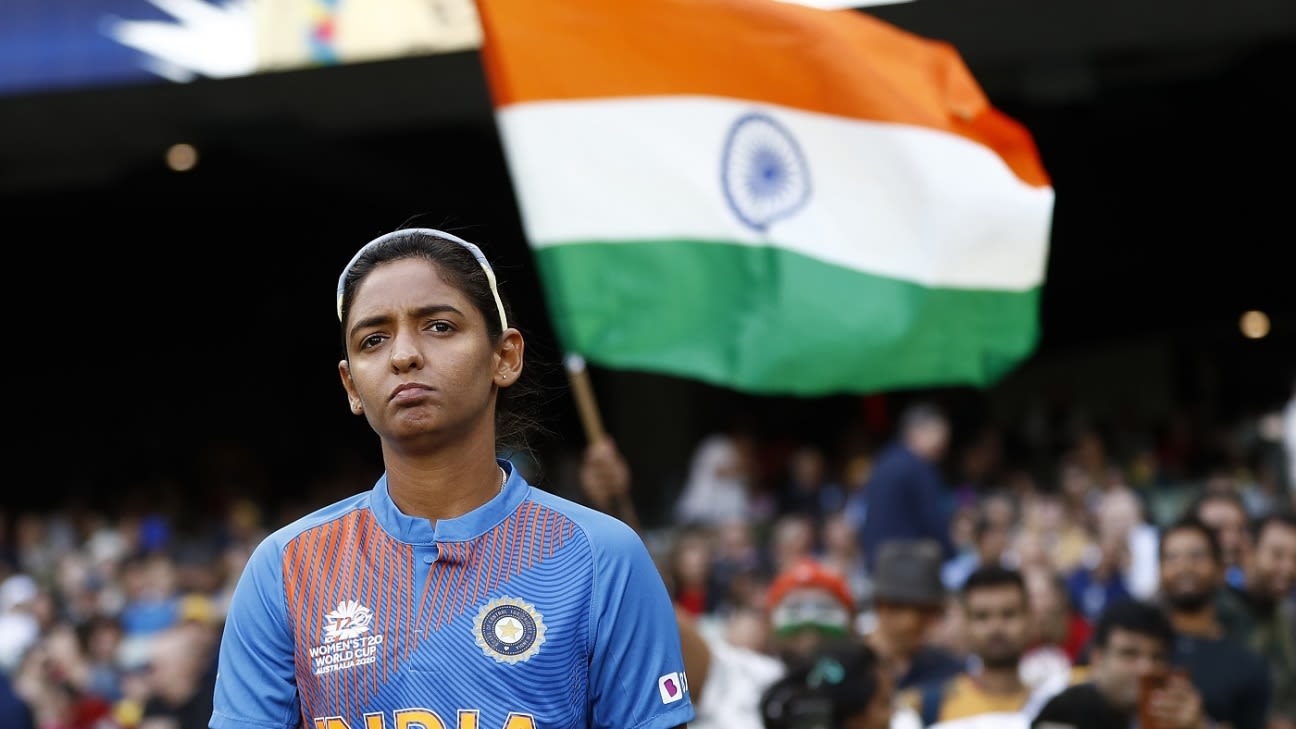India women’s Test vice-captain says the team got valuable tips on constructing a Test innings from her male counterpart, Ajinkya Rahane
“I’ve played only two red-ball matches [in international cricket]. As a batting group when we have a discussion… this time we got a chance to speak to Rahane as well,” Kaur, the India Test vice-captain, said of her “easy and friendly talk” with her male counterpart in Southampton, where both the Indian teams served a hard quarantine upon arriving in the UK on June 3. “He shared his knowledge with us as to how to approach batting in the longest format and how one should divide their innings into parts.
“We may not have much practice under our belt [going into the Test], but mentally [we are prepared]. We’ve discussed a lot of things so we prepare ourselves well for the match. Even in the nets, we’ve tried to be in a good frame of mind because when you are happy, other than thinking too much about your batting, you tend to play well.”
The women’s team arrived in Bristol on Monday for the one-off Test against hosts England that begins on Wednesday. The opening fixture of a seven-match multi-format assignment, the Test marks India’s first outing in the format since the one-off Test at home against South Africa in November 2014. On the domestic circuit, the last multi-day women’s competition – the Senior Women’s Inter-Zonal Three-Day Game – was held in March-April 2018, in Thiruvananthapuram.
Kaur admitted that inadequate preparedness heading into the tour wasn’t ideal, but welcomed the revival of Test cricket for her team.
“Whatever time we’ve got [since coming out of quarantine], we’ve tried to simulate match scenarios as much as possible and tried to keep ourselves in the best frame of mind,” Kaur said. “We didn’t get much time to prepare, or any practice games. Individually, it’s imperative to adapt to the situation.
“We’ve never tried tinkering too much with Shafali because she is a natural player, and if you try talking too much technique or game planning with her, she can get disturbed because she is only 17”
Harmanpreet Kaur is all for letting Shafali Verma develop her own way
“The surfaces are different to what we get in India. We’ve practised against the swinging ball in the nets. We have a further two days – today and tomorrow – to prepare ourselves better for the match, so I hope we’ll be able to do that well.
“It’s a totally different scenario [to playing with the white ball]. I know we didn’t even get any domestic games with the red ball. In the upcoming season and years we’ll get more red-ball cricket also, which is a very good sign for us.”
Kaur said that in the practice sessions India have had so far, the Kookaburra didn’t pose much challenge.
“Dealing with a Kookaburra didn’t feel too different because the ball size and weight is roughly the same [as the white ball we use in limited-overs cricket]. The last time we played [a Test], we felt the red ball was a bit heavier than the white variant, which makes you rely on your timing more. But the Kookaburra white and red ball feels the same; just the colour is different. We felt good playing with it because when you’re in whites and you play with the red ball, it’s a totally different feeling.”
“We’ve never tried tinkering too much with Shafali because she is a natural player, and if you try talking too much technique or game planning with her, she can get disturbed because she is only 17 years old,” Kaur said. “To burden her with too many thoughts isn’t the right thing.
“All of us try to create a good environment for her to be able to feel less pressured and be able to enjoy her cricket well. She was looking great in the nets, and I hope if she gets a chance to play she’ll do better.”
“She is someone who always takes the lead whenever we’re on the field,” Kaur said. “She’s always [been] special for us because her quota [of overs] is [important]. She will always give us breakthroughs whenever we need. Not only her but all the bowlers are very important because in Test matches you need breakthroughs, and I think she will be fantastic in this match also.”
“My interactions with him have been the same [as before]. He is someone who’s involved in the game all the time and expects the same of the players. Whenever you speak to him, you feel like you’re in a match. He asks you to imagine yourself in a match situation and figure out how you would react to it.
“I get a lot of information speaking to him because he, too, has played a lot of cricket, including T20 cricket. So the experience is the same. Whatever we had done in 2018, we are repeating those things now as well.”
Annesha Ghosh is a sub-editor at ESPNcricinfo. @ghosh_annesha
